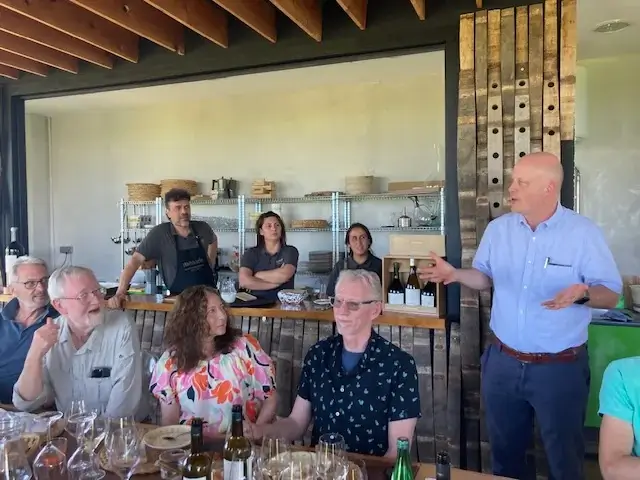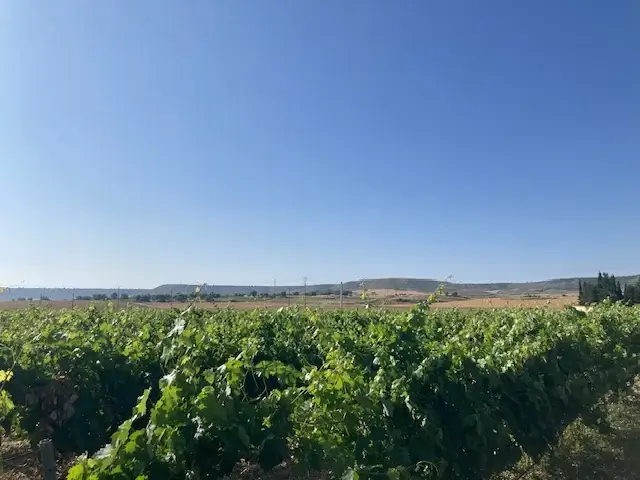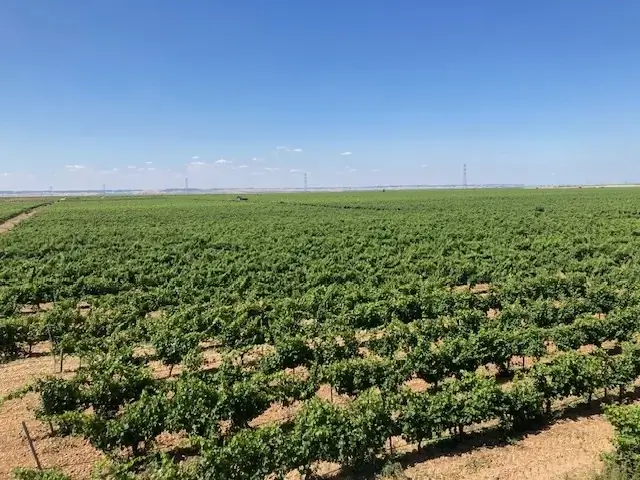We started the first full day of our tour to Castilla y León in Cigales, 20 minutes drive north east of Valladolid. We crossed the Pisuerga river to get to Bodega Concejo, the only winery on the left bank.
Tim explained that while Cigales has similar growing conditions to Ribera del Duero, and grows the same grape varieties, it hasn’t achieved anything like the fame of its fellow Castilla y León DO.
Historically Cigales reputation was for ‘clarette’, or rosé, wines, deeply coloured and very food friendly. Sadly, this is not a particularly popular style around the world, and the current craze for pale pink Provence rosé hasn’t helped its cause.
Half of Cigales production is of rosé, but we were to discover on our visit the region makes some very impressive red wines too.
At Bodega Concejo in the village of Valoria La Buena we were greeted by Loreia, who explained the 100+ year history of the winery, owned by the Concejo family.
In short, the original winery on the hillside with its underground cellars was outgrown, particularly after a 30ha vineyard was planted with Tempranillo and Garnacha. These provide the grapes for their Carredueñas range, priced extremely competitively and as we discovered, of very good quality.
Older vineyards are slightly further from the winery but these with their 100+ year old vines are the source of grapes for the Concejo range.
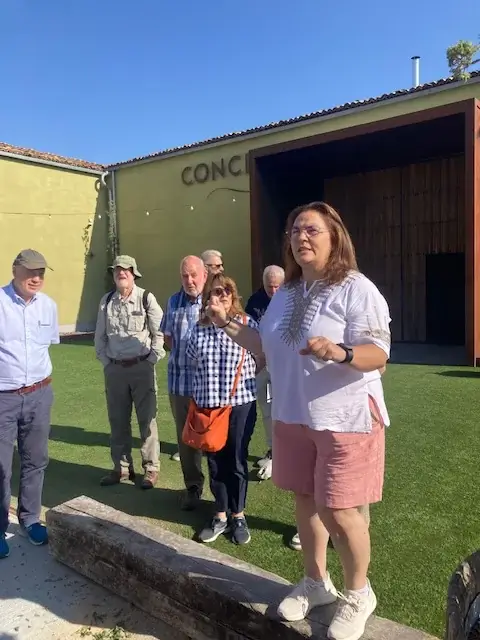
The family who are very committed to reviving the local economy have also renovated the old monastery/castillo in the village which is now a hotel.
Our tasting was led by export manager Laura, in their large function room, looking out across the vines. It was preceded by a video of their work in vineyard and winery. They are certified organic, but relatively mechanised in the larger vineyard.
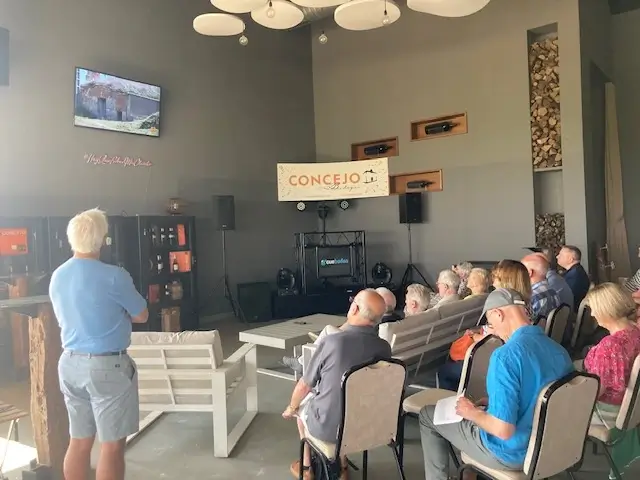
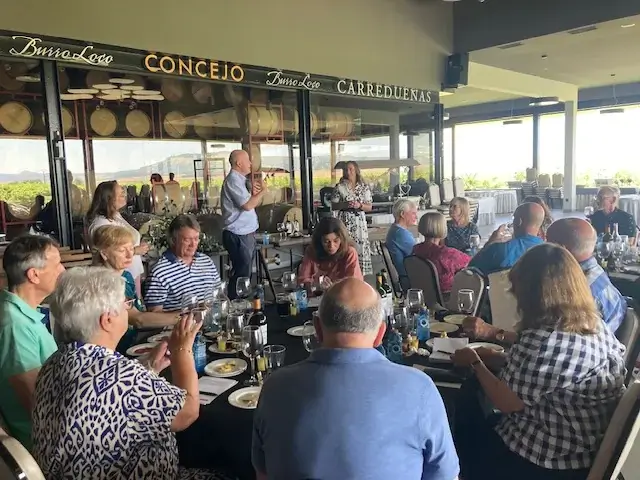
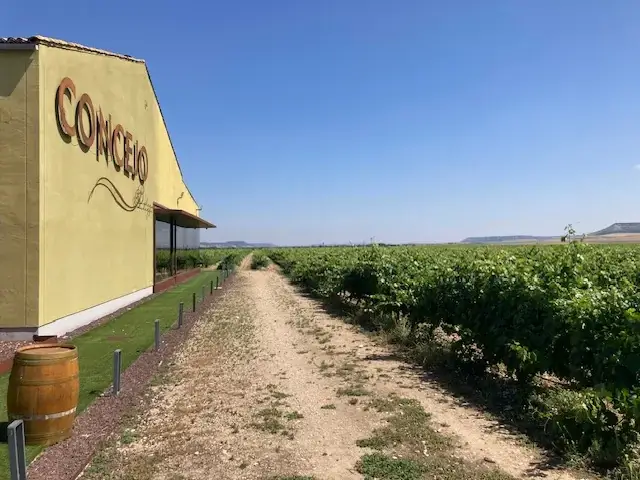
The rosés we tasted were lovely, with deep colour, loads of flavour and some noticeable tannins, the Concejo which had been fermented in new oak was particularly smooth.
The reds were a marvel, from the basic Carradueñas (€7/bottle) through Concejo Reserva and Gran Reservas (including a heavenly 1999 vintage) to the first ever vintage of their “Concejo +”, made from a field blend of grapes from a 120 year old vineyard.
Each wine was accompanied by tapas, which proved how gastronomic Cigales wines are, while a morcilla ball with gold leaf masquerading as a Ferrero Rocher was a first for most of us.
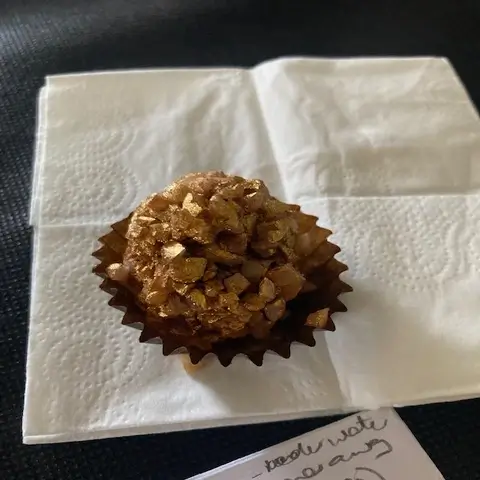
40 minutes to the south west, skirting Valladolid is the DO of Rueda. Here our visit to Bodegas Menade was a marvel. In the village of La Seca we entered their old winery, which in the time Tim has been visiting has been transformed from a scruffy old building into a simply but very tastefully laid out library come tasting room. Our guide was Ivan, who Tim has known since he first came to Menade in 2017.
Ivan was a great character, full of facts, the product of much personal research, including into Spanish history, NATO, grape growing and wine making. Of relevance to our visit, he explained that wine has been made in Rueda since the Romans introduced vines 2,000 years ago, but it was not until vineyards were replanted after the ravages of Phylloxera that its reputation began to grow, particularly when the Marqués de Riscal Riojan wine company invested in the area to grow Sauvignon Blanc. The success of this prompted local growers to get behind their Verdejo, which is now one of top white grape varieties of Spain.
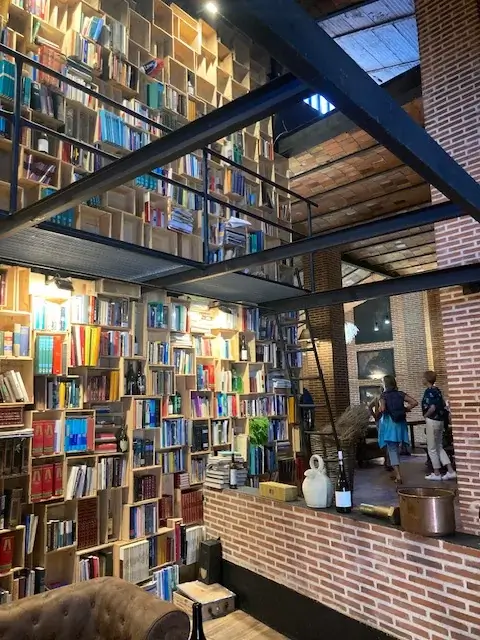
In their incredible cellars, dug by hand 13m deep beneath the winery we first had a tasting of three of their Verdejos. The first was their top of the range La Misión, made from grapes from a 120 year old vineyard, the second was of the Rueda Pálido style, aged for a year under a layer of flor (like Fino sherry), the third (from barrel) was a Rueda Dorada, also like sherry though this time oxidatively aged in a solera system created in 2018 (that still draws on an original solera of just three barrels containing 58 vintages from 1910-68).
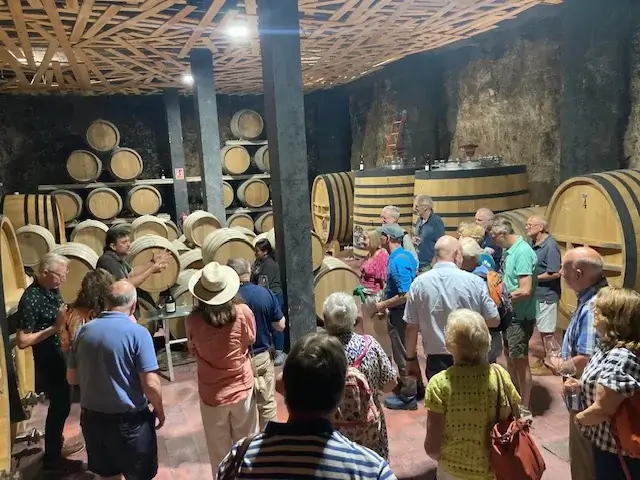
We then descended another flight of stairs and wound our way round the original cellars, which had housed the tanks where wine fermented and matured over winter, and nowadays is used as a super cool warehouse.
The amount of manual effort that had gone into hewing these cellars out of the bedrock was something to consider, as was the risky nature of making wine in such remote, cold conditions – fires had to be lit to create the warmth for yeasts to ferment the wine, so the poor soul who descended into the depths to tend to the fires risked suffocation both from lack of oxygen and excess carbon dioxide. This was despite the chimneys constructed to take poisonous gases to the surface (these can be seen in old buildings across the wine regions of Castilla y León).
It was sobering to hear that the grandfather of the current owners had lost five friends and family members in such circumstances.
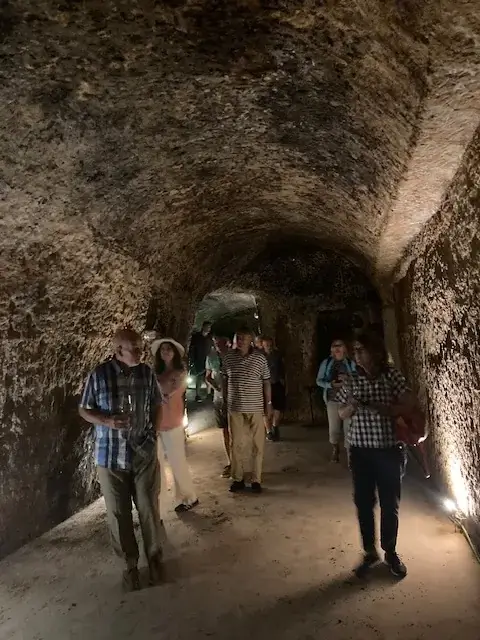
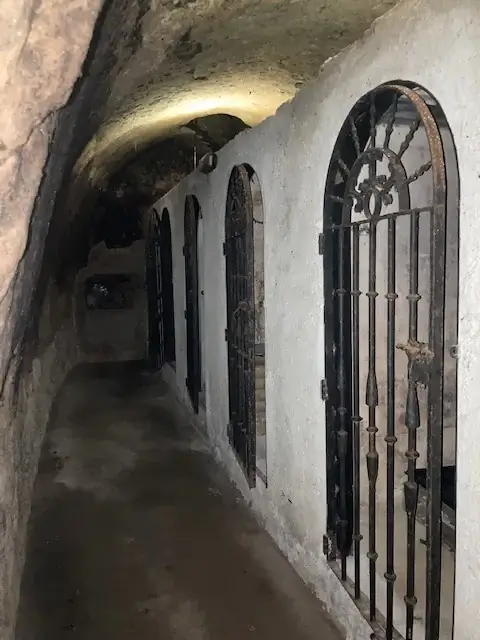
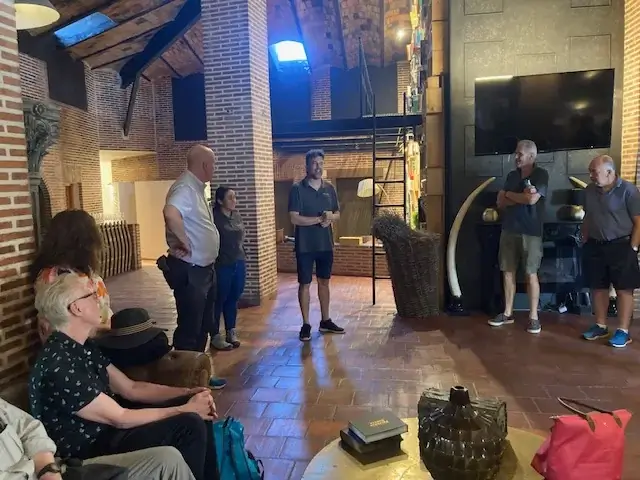
Back on the surface another couple of wines and some tortilla were produced before we boarded the coach and drove up to Menade’s fabulous modern winery with its vertical garden and stunning views across the vineyards. A quick visit to the biodiversity garden, and a peep at the geese, hens, goat and donkeys preceded a lovely relaxed lunch of tapas and some perfectly cooked ham from Ibérico pigs. Accompanied by a Verdejo, a Sauvignon Blanc and a Tempranillo.
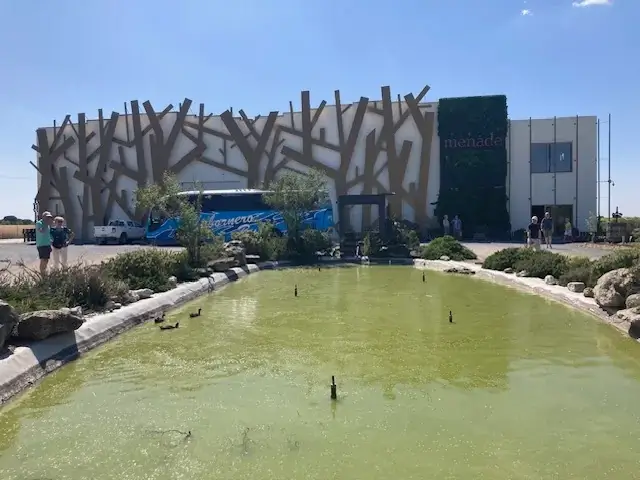
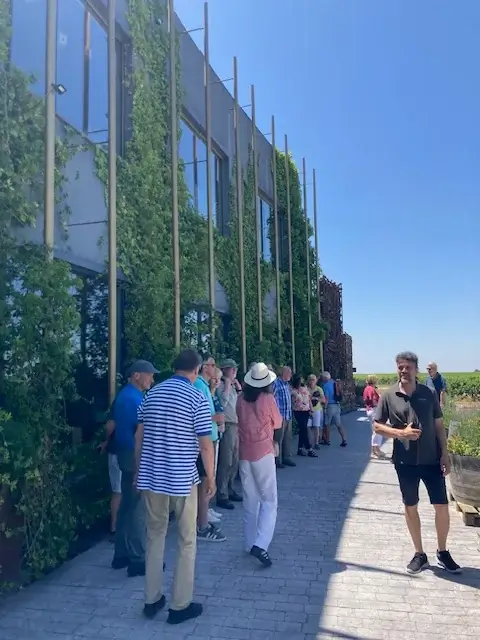
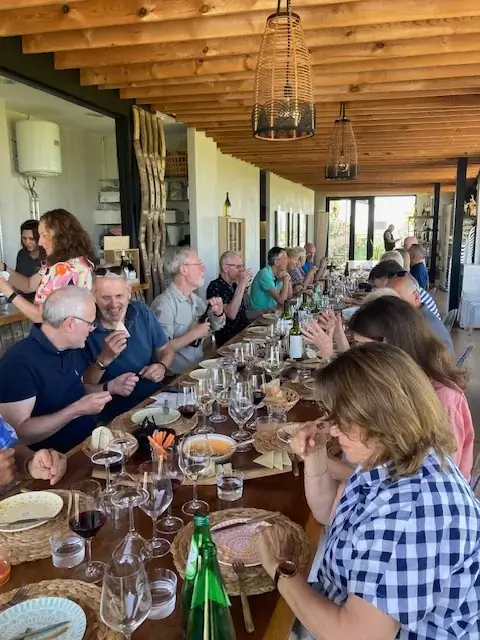
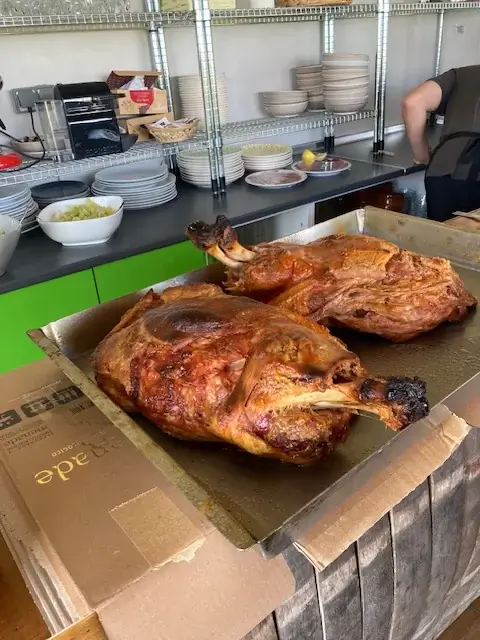
We thanked Ivan and his team for a lovely meal, hugely entertaining and informative visit, and departed, looking forward to a pleasant evening ahead in Valladolid.
